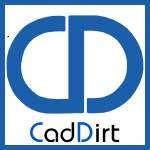Backup Simplicity...
/ Last weekend I did a show on backing up your CAD data and the methodology of 3-2-1 backup.
Last weekend I did a show on backing up your CAD data and the methodology of 3-2-1 backup.
I talked about my method of backup that I use for a number of our server since we have multiple sites and can build in some offsite storage. I also expressed my distain for backup tools that create the "blob backup" file that requires an application to navigate the backup and restore a file. Because of this, I use Robocopy, which is now built into Windows.
Over the past week I have received a few requests of a simple backup script to grab a folder and copy it to another location and make sure that the copy is a mirror of the source so I thought I would share. To add the automatic component I simply use Windows Task Scheduler so I can "Set it and forget it...".
Robocopy Backup Script:
@ECHO OFF
SET prefix="server_backup"
SET source_dir="C:\CAD Data"
SET log_filename=%prefix%.log
SET dest_dir="C:/backup"
SET options="/MIR /LOG:%log_filename%"
ROBOCOPY %source_dir% %dest_dir% %options%
:END
In Windows7 and Windows Server 2008, Robocopy is installed by default but you will need to install it in XP or Server 2003. You can avoid creating a *.BAT file with the above script by simply using the Windows Task Scheduler by using the "Add arguments" area when creating an action to run. Personally I like being able to edit the script in a text editor, especially if I decide to get creative and want to add a few areas to the script.
This script is simple, fast and I can browse the backups and they are a complete mirror of my original data. If you have variants of similar methods, share them in the comments! NOW GO BACKUP YOUR STUFF! ~Lou

